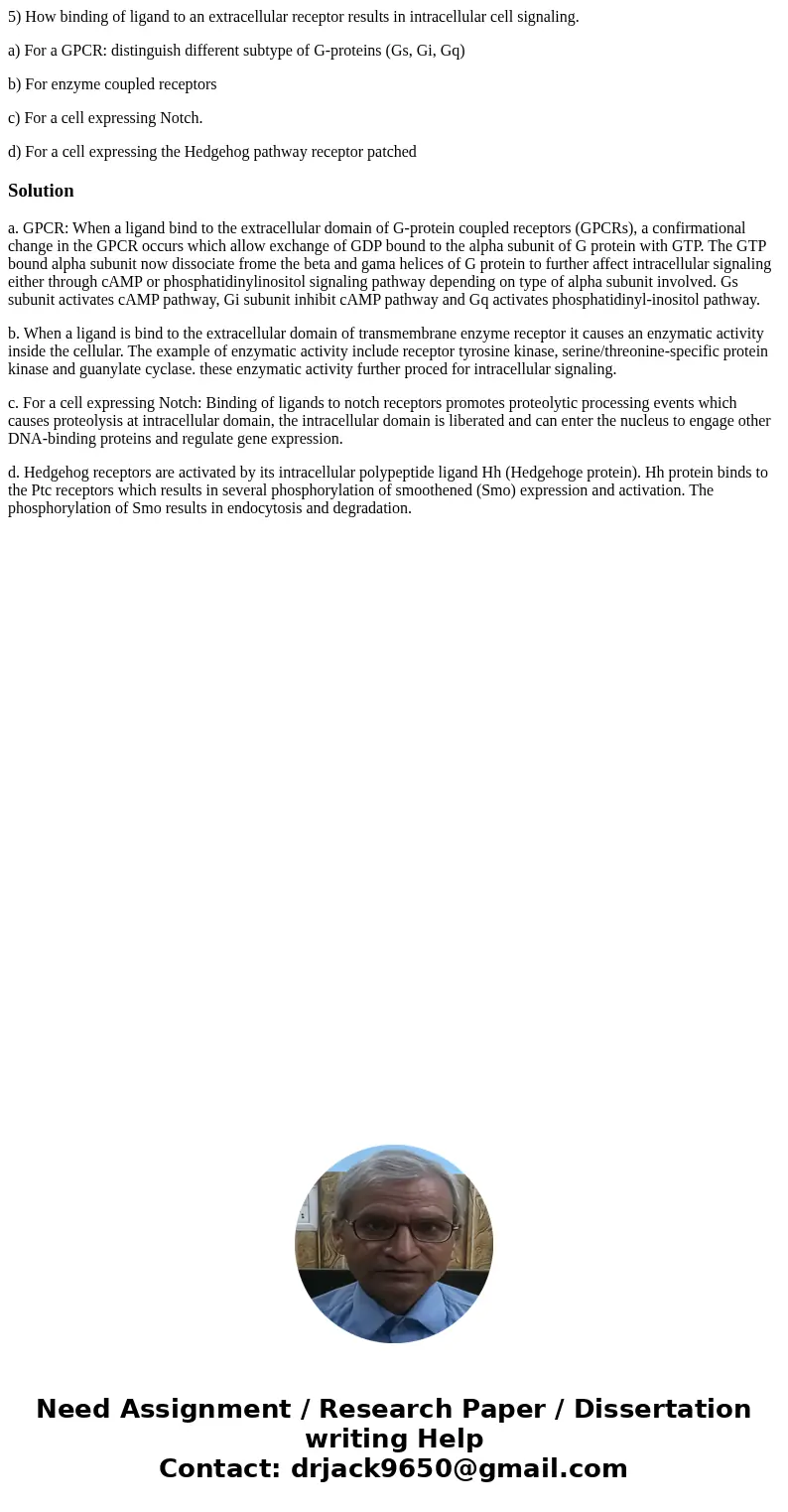5 How binding of ligand to an extracellular receptor results
5) How binding of ligand to an extracellular receptor results in intracellular cell signaling.
a) For a GPCR: distinguish different subtype of G-proteins (Gs, Gi, Gq)
b) For enzyme coupled receptors
c) For a cell expressing Notch.
d) For a cell expressing the Hedgehog pathway receptor patched
Solution
a. GPCR: When a ligand bind to the extracellular domain of G-protein coupled receptors (GPCRs), a confirmational change in the GPCR occurs which allow exchange of GDP bound to the alpha subunit of G protein with GTP. The GTP bound alpha subunit now dissociate frome the beta and gama helices of G protein to further affect intracellular signaling either through cAMP or phosphatidinylinositol signaling pathway depending on type of alpha subunit involved. Gs subunit activates cAMP pathway, Gi subunit inhibit cAMP pathway and Gq activates phosphatidinyl-inositol pathway.
b. When a ligand is bind to the extracellular domain of transmembrane enzyme receptor it causes an enzymatic activity inside the cellular. The example of enzymatic activity include receptor tyrosine kinase, serine/threonine-specific protein kinase and guanylate cyclase. these enzymatic activity further proced for intracellular signaling.
c. For a cell expressing Notch: Binding of ligands to notch receptors promotes proteolytic processing events which causes proteolysis at intracellular domain, the intracellular domain is liberated and can enter the nucleus to engage other DNA-binding proteins and regulate gene expression.
d. Hedgehog receptors are activated by its intracellular polypeptide ligand Hh (Hedgehoge protein). Hh protein binds to the Ptc receptors which results in several phosphorylation of smoothened (Smo) expression and activation. The phosphorylation of Smo results in endocytosis and degradation.

 Homework Sourse
Homework Sourse